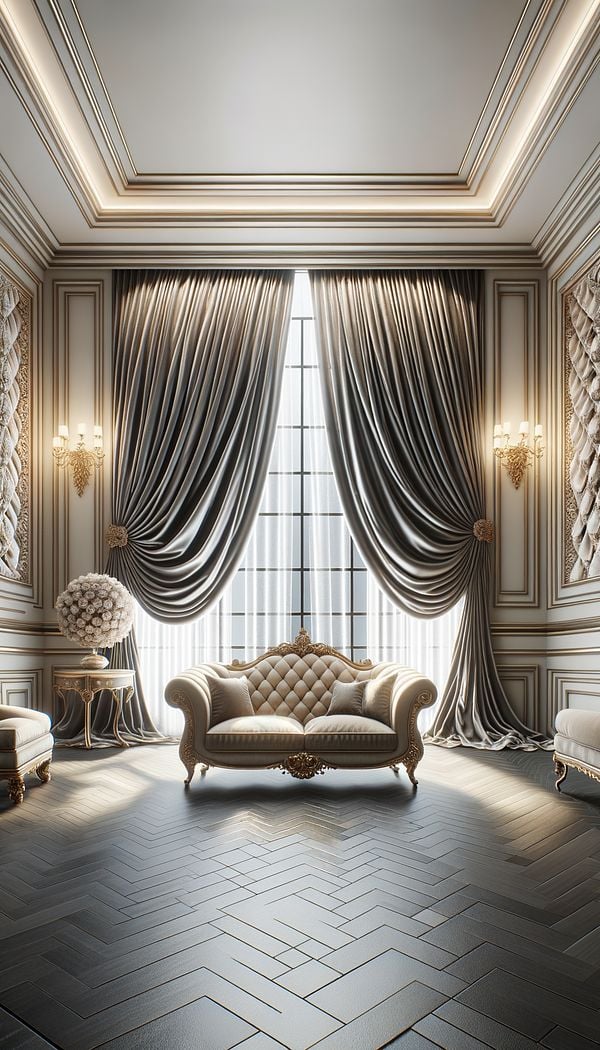What is Silk?
Silk is a natural fiber known for its lustrous appearance and luxurious feel.
Description
Silk, a highly revered material in the world of interior design, is derived from the cocoons of silkworms, specifically those of the Bombyx mori species. It has been prized for centuries, not just for its inherent beauty, but also for its exceptional properties. As a natural protein fiber, silk is distinguished by its high sheen, which is a result of the fiber's prism-like structure that refracts incoming light at various angles, creating its signature luster. Beyond its aesthetics, silk stands out for its remarkable strength, elastic nature, and ability to absorb dyes, resulting in vibrant colors that retain their depth over time.
Silk's application in interior design transcends mere decoration; it's a statement of luxury and elegance. Its diverse usability ranges from draperies and upholstery fabrics to wall coverings and decorative pillows, bringing a touch of sophistication and comfort to any space. Silk's insulation properties also contribute to its versatility, providing warmth in the winter and coolness in the summer, thereby enhancing the ambience of interiors. However, it's worth noting that while silk is highly esteemed, its delicate nature demands careful maintenance to preserve its quality and appearance over time.
Usage
Silk is widely used in upscale residential settings and luxury hospitality spaces, such as boutique hotels and high-end restaurants. Designers often select silk for formal living rooms, plush master bedrooms, and elegant dining areas, leveraging its rich texture and sheen to elevate the space's overall aesthetic. Silk draperies in a well-appointed drawing-room or silk upholstered furniture in a private library are classic examples of its application in interior design.
FAQs
-
Is silk durable?
Yes, silk is surprisingly strong and durable for its delicate appearance. However, it requires proper care and maintenance to extend its longevity, especially in high-traffic areas.
-
Can silk be used in every type of room?
While silk can be used in a variety of settings, its delicate nature makes it more suitable for low-traffic areas and formal spaces where it won't be subjected to heavy wear.
-
How should silk be maintained?
Silk should be cleaned with gentle methods, avoiding harsh chemicals and excessive exposure to sunlight, which can degrade the fibers and fade the colors. Professional cleaning is often recommended.
Practical Application
When incorporating silk into your design, consider the room's usage to ensure longevity. Use silk in areas less prone to spills and stains, and opt for professional cleaning as needed to maintain its luxurious appearance. Also, consider combining silk with other durable materials in high-use areas to enjoy its beauty while preserving its condition.
-
Decorating Principles & Elements330 articles
-
Materials & Textiles360 articles
-
Textiles & Upholstery252 articles
-
AcrylicAcrylic is a synthetic material known for its durability and versatility in interior design.
-
ContrastContrast is the difference in luminance or color that makes an object distinguishable.
-
DupioniDupioni is a type of silk fabric known for its luxurious texture and slight sheen.
-
FiberfillFiberfill is a synthetic polyester material used as stuffing in pillows, cushions, and quilts.
-
SouthwesternSouthwestern refers to a design style influenced by the characteristics and cultures of the American Southwest.
